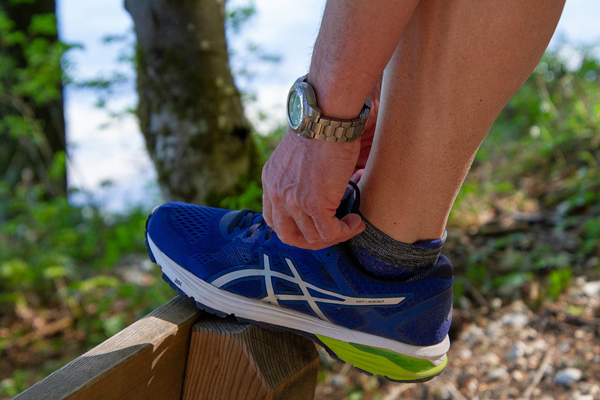
You might think that buying a pair of running shoes is more an issue of fashion than a serious decision that takes any technical consideration. Nothing could be further from the truth; in fact, selecting the proper running shoe is pivotal to protecting your joints from injury.
Shoe technology now incorporates different types of construction and materials to help prevent injuries and improve overall comfort. The different types of shoes are named according to their cushioning systems and what each provides the runner. Running shoes now come in three major categories: cushioned, stability and motion control, which ensure comfort, proper function for the foot and correct support.
For those with a neutral gait:
A cushioned shoe has a soft midsole made from single-density ethylvinylacetate (a dense foam also known as EVA) and is very flexible. Recommended for use by males weighing less than 180 pounds and females weighing less than 150 pounds, the shoe has a cushioned midsole that allows for abundant shock absorption in the heel.
For those with a slight or moderate overpronation:
Pronation is the inward and downward rotation of the medial bones in the middle portion of the foot; in running, the foot tends to collapse on its inside. For running, the stability shoe is best. These shoes contain double-density EVA and a roll bar made of polyurethane in the posterior aspect of the midsole. The stability shoe comes in semi-curved and semi- curved/straight shapes to accommodate the foot shape of overpronators.
For those who have severe overpronation:
A motion control shoe gives the greatest stability. It is made with the same construction as the stability shoe, but is firmer. The motion control shoe also comes in straight or semi-curved/straight shapes because severe overpronators tend to have flat feet.
Research shows that the proper running shoe can alleviate pain associated with running and help correct biomechanical errors that may otherwise lead to injuries. Some suggestions when shopping for running shoes: buy shoes at the end of the day, walk in the shoes for several minutes to insure proper fit and comfort, and don’t always use cost as a measure. Many mid-priced shoes are as good as the most expensive shoes. A physical therapist can assess your gait to assist with the selection of the correct running shoe, as well as develop an individualized running program just for you.
